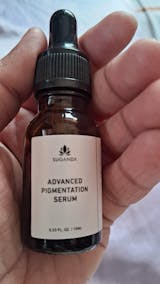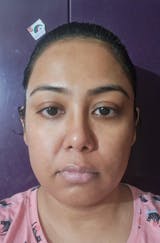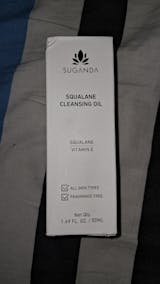The biggest problem for folks with oily skin is acne. But do you think about dry skin problems ever? Dry skin is the only skin type that offers most skin problems. It causes roughness, dry patches and rashes. But mostly people confuse about the acne on dry skin and this concept remained vague, that dry skin causes acne or not? The answer to the question is yes.
Common Misconception of Oily & Acne skin
Unfortunately, most people do not believe that dry skin can be prone to acne. The reason behind this misconception is simple. It is always believed that only oily skin is prone to acne as the root cause of acne is excessive oil in our skin. But dry skin acne is a real problem, which can become severe if not treated well. Our skin has lots of hair follicles that can be blocked if not taken care of properly. Blocking of these follicles causes acne. Moisture makes the skin elastic and pliable, whereas a lack of it promotes cracking, flaking, and peeling. The reason is your skin barrier is not strong enough to protect itself. Cracked skin is more sensitive to infection from microorganisms such as bacteria and fungus, which can lead to more outbreaks. Fortunately, dry skin acne treatment is available now from mild to severe conditions. Topical therapies are used as first-line treatment for acne most of the time among these treatments.
Dry Skin Folks Don’t Moisturize Skin Well
Most of the time, people with dry skin do not moisture their skin properly, leading to extensive dryness and cracks on the skin. Choosing the wrong skin type of products can also damage the skin. Some oil-free products can benefit oily skin but not for dry skin types. Choose your skincare products, like face wash, creams, lotions, carefully to avoid further damages.
How to prevent dry skin acne?
Dry skin Acne treatments are also dehydrating. Even if your skin isn't normally dry, it may become so if you use an acne treatment regularly. To cope with acne problems, you can adopt certain preventions as follows:
- Non-Comedogenic and Hydrating Moisturizers
To keep the pH level of your skin balanced, along with acne treatment, you must use some mild non comedogenic moisturizers for your dry skin. It will keep the skin hydrated, and the skin will not lose its elasticity. Daily sun protection is essential to prevent dark black spots when treating post-inflammatory pigmentation. These black spots can become worse when exposed to UVA and UVB rays.
- Anti-acne Products and Skin Protection
Most of the time anti-acne products focus on reducing oil and it works for acne. But sometimes these products damage the dry skin. If you use retinoids as part of your acne treatment, wearing sunscreen is vital for you.
How to Treat Dry Skin Acne?
Acne treatment on dry skin might be difficult. Many over-the-counter acne skincare solutions are designed for oily-skinned people and can be quite drying for those with dry skin. Fortunately, some good skincare products are specifically formulated for treating acne in dry skin. There are several medications, e.g., anti-androgenic therapy, azelaic acid, benzoyl peroxide, topical or systemic antibiotics and tretinoin.
Topical anti-acne therapy, includes topical retinoids (i.e., tazarotene, adapalene and tretinoin), azelaic acid, benzoyl peroxide and others recommended routes of treatment for mild to moderate acne. Many practitioners choose topical retinoids for acute and long-term acne therapy. Some of these topical treatments, such as benzoyl peroxide, resorcinol, and Sulphur, are easily available over-the-counter to treat dry skin acne.
Skincare Routines with Dry Acne skin
Whether your skin is inherently dry or has become so because of your acne treatments, the measures below will help you manage dry skin while also controlling breakouts.
Morning skincare routine for breakout-prone skin
- cleanser
- Toner
- Exfoliant that stays on the skin
- Anti-acne-specific therapies, for example specialized serums, boosters, acne-fighting and so on. Apply the acne treatment (if needed) first, then layer the remainder of the products in order of thinnest to thickest texture.
- Use a sunscreen moisturizer.
Evening skincare routine for dry skin
- Detoxifier
- Toner
- Exfoliant that stays on the skin
- Apply your acne-specific treatment
- A moisturizing agent (without SPF)
Final thoughts
Rather than guaranteeing a cure, basic therapy principles should try to regulate this skin issue as much as feasible. Certainly, the important thing is to help improve a person's appearance, which includes preventing future skin damage such as pimples, dark spots, etc. Basic management measures include using various anti-acne products and gentle facial washing with non-irritating soaps two to three times a day. Acne and its potentially irritating topical therapies can lead to hyperpigmentation, which should be closely monitored.
Bibliography
- Dawn Z Eichenfield 1 2, J. S. (2021, Nov). Management of Acne Vulgaris: A Review. National Libraray of Medicine. Retrieved from https://pubmed.ncbi.nlm.nih.gov/34812859/
- Donald E. Greydanus, M. D. (2021, April). Acne in the first three decades of life. : www.elsevier.com/locate/disamonth, 67(4), 68. Retrieved from https://www.sciencedirect.com/science/article/abs/pii/S0011502920301656?via%3Dihub
- Efficacy and tolerability of a 3-step acne system containing a novel solubilized benzoyl peroxide lotion for normal to dry skin versus a benzoyl peroxide/clindamycin combination product: An investigator-blind, randomized, parallel-group study. (2008, February 01). JAAD Journal of the American Academy of Dermatology.
- Shi Lei, J. Y. (2022, February). A prospective study of adverse reactions of ALA-PDT for acne vulgaris. Sciencedirect, 38. Retrieved from https://www.sciencedirect.com/science/article/abs/pii/S157210002200041
- sons, J. w. (2016). Differential effectiveness of selected non-psychotropic. Experimental Dermatology. Retrieved from http://www.wileyonlinelibrary.com/journal/EXD







 +91 9347578980
+91 9347578980



